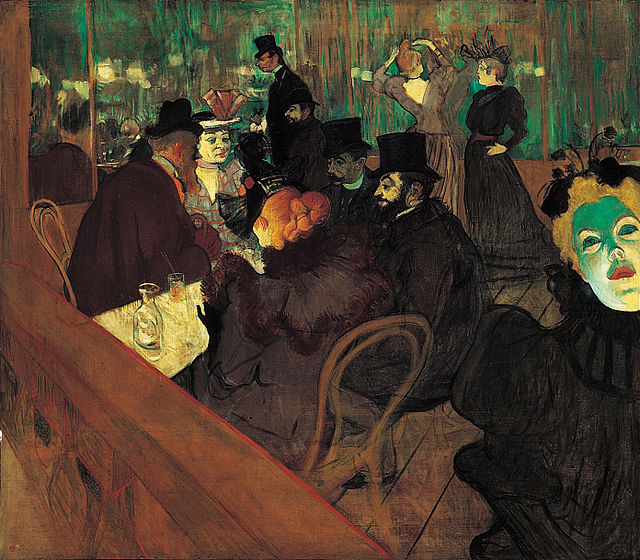Fin de siècle is a French term meaning "end of century,” a phrase which typically encompasses both the meaning of the similar English idiom "turn of the century" and also makes reference to the closing of one era and onset of another. Without context, the term is typically used to refer to the end of the 19th century. This period was widely thought to be a period of social degeneracy, but at the same time a period of hope for a new beginning. The "spirit" of fin de siècle often refers to the cultural hallmarks that were recognized as prominent in the 1880s and 1890s, including ennui, cynicism, pessimism, and "a widespread belief that civilization leads to decadence."
Arthur Schopenhauer, German philosopher, whose philosophy influenced the culture of fin de siècle.
The Belgian symbolist Fernand Khnopff's The Caress
Irish Aesthetic writer Oscar Wilde
At the Moulin Rouge (1895), a painting by Henri Toulouse-Lautrec that captures the vibrant and decadent spirit of society during the fin de siècle
In conventional usage, boredom, ennui, or tedium is an emotion characterized by uninterest in one's surrounding, often caused by a lack of distractions or occupations. Although, "There is no universally accepted definition of boredom. But whatever it is, researchers argue, it is not simply another name for depression or apathy. It seems to be a specific mental state that people find unpleasant—a lack of stimulation that leaves them craving relief, with a host of behavioral, medical and social consequences." According to BBC News, boredom "...can be a dangerous and disruptive state of mind that damages your health"; yet research "...suggest[s] that without boredom we couldn't achieve our creative feats."
A souvenir seller appears bored as she waits for customers.
Boredom by Gaston de La Touche, 1893
A girl looking bored
1916 Rea Irvin illustration depicting a bore putting her audience to sleep








